 |
 |
 |
 |

|


|
|
|
|
|
|
#16
|
||||
|
||||
|
If we look at the assembled parts outside of pump to gauge overall size, the copper washer sits a few millimeters below top of pump when housing is removed.
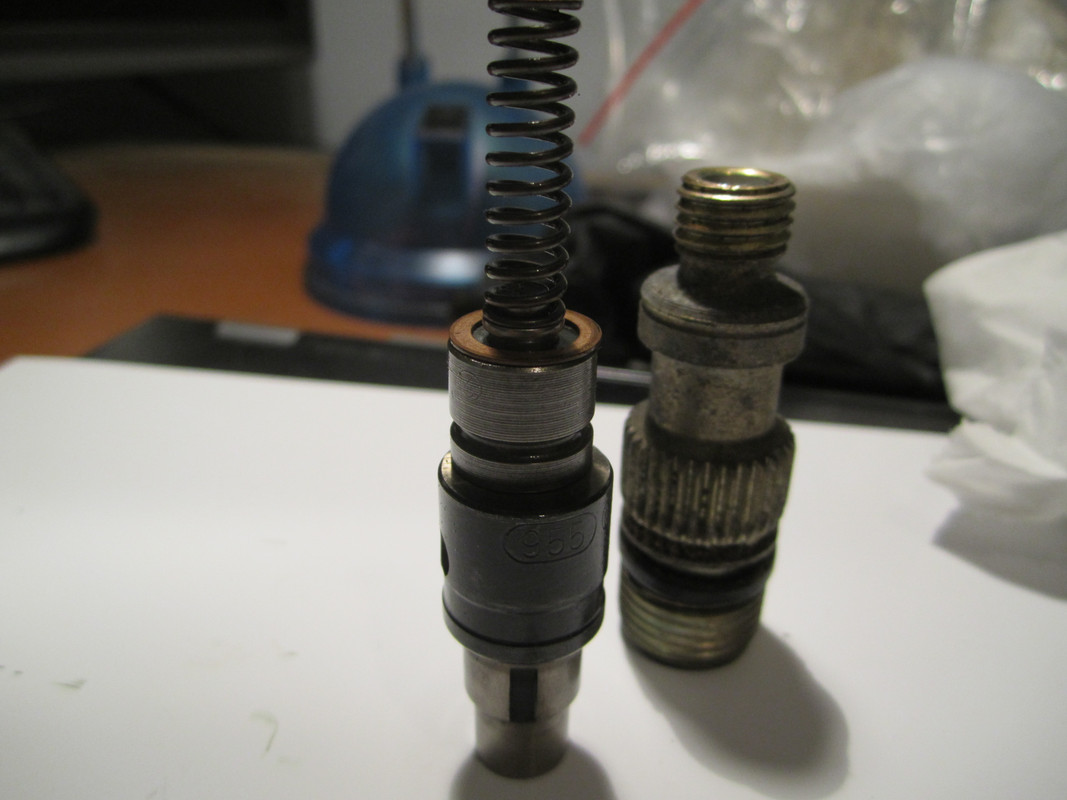 The copper seal seats internally around where the rubber O ring is outside. 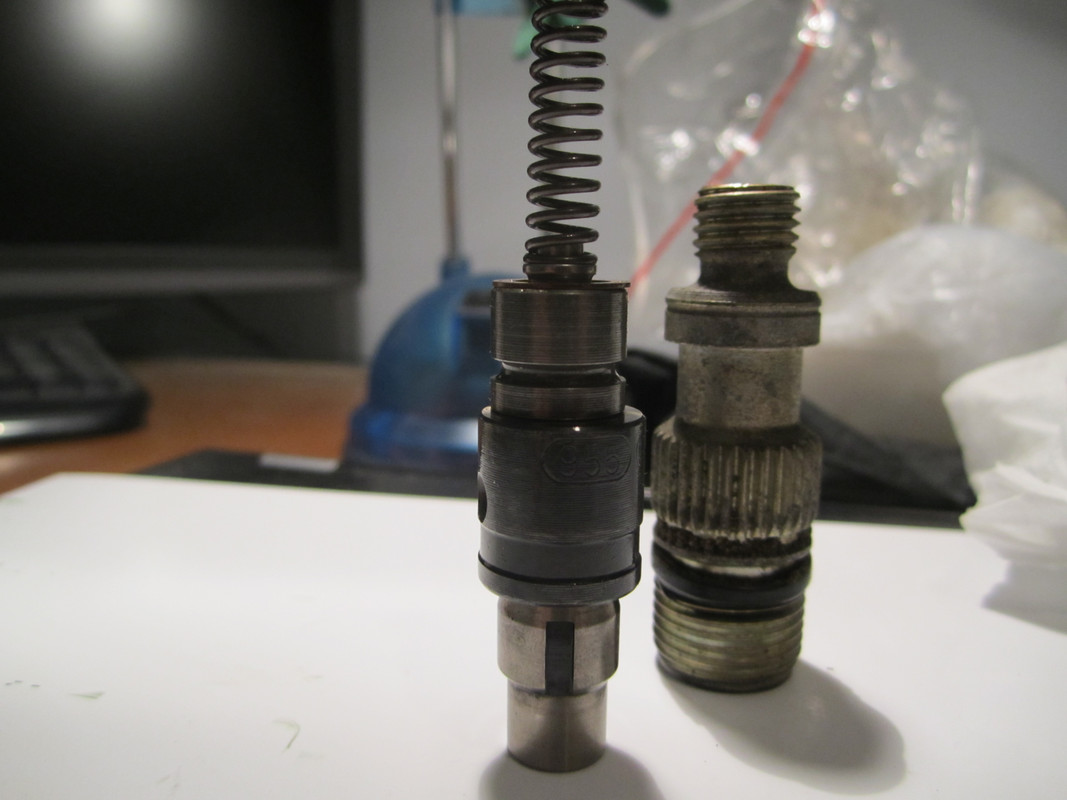 The next piece shown below is fixed being anchored by a slot. Calculating distance from here until the copper seal face indicates they are held in situ, this part i believe is a piston sleeve. 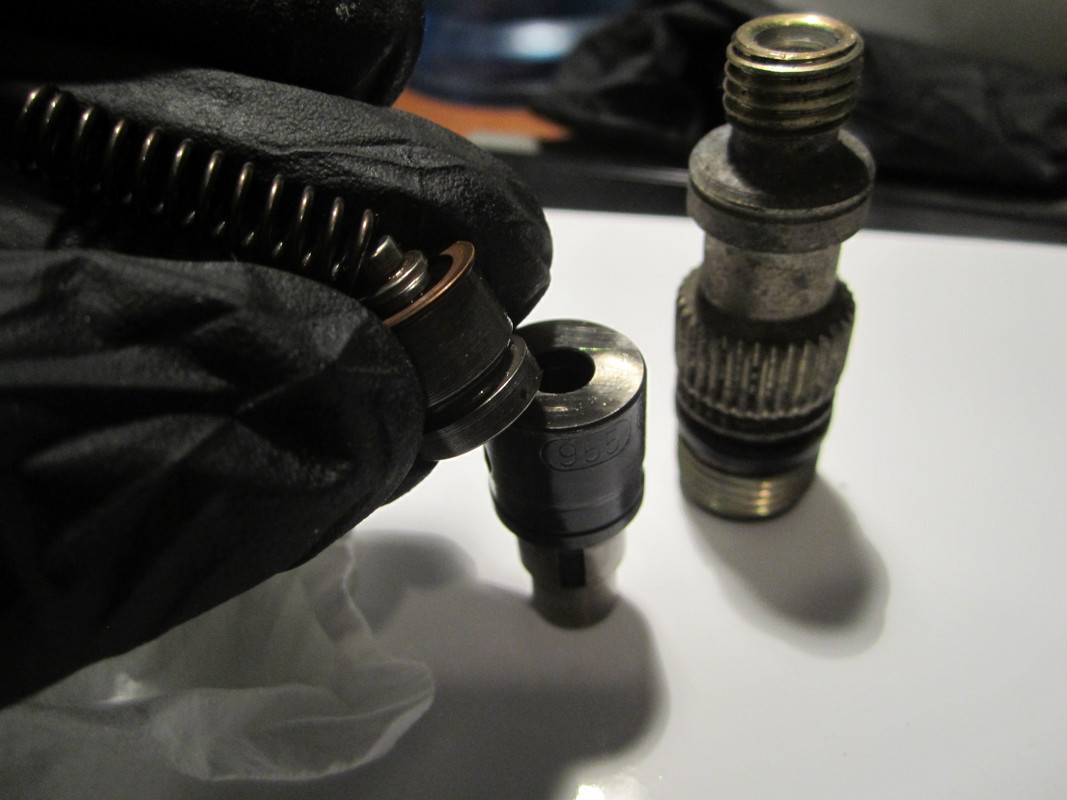 Looking from below this is a very smooth bore like surface for piston travel, the exit hole sits beneath the tail of X piece. 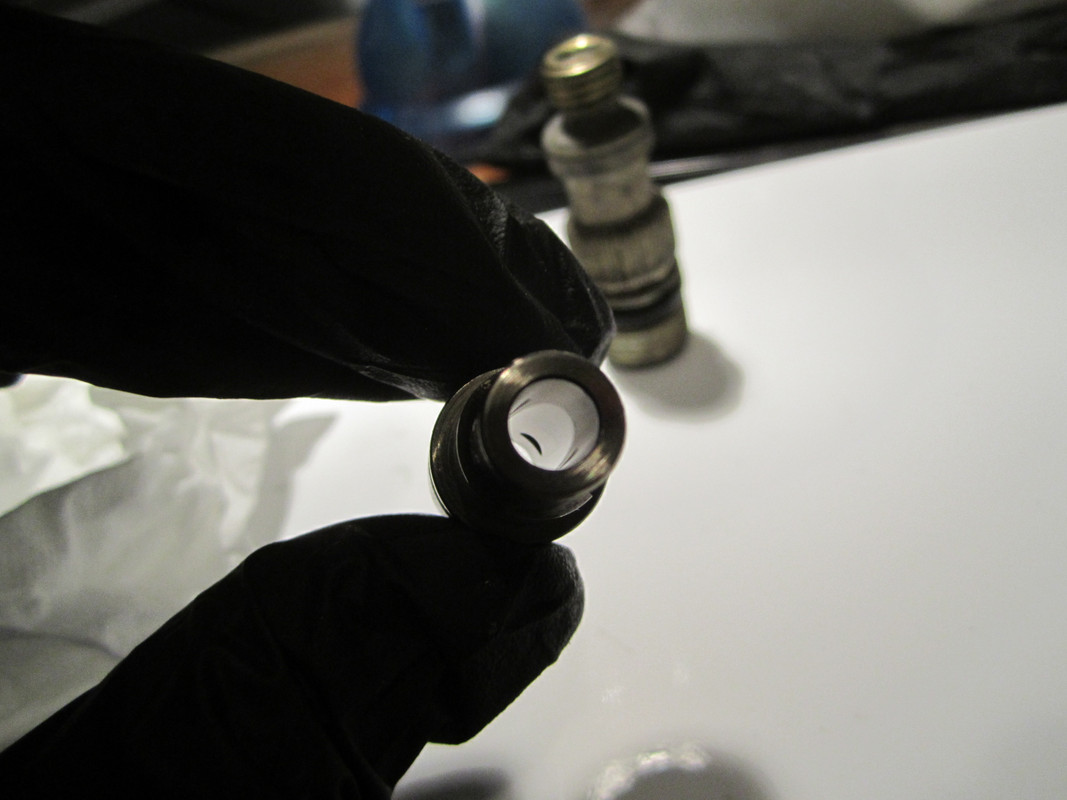
__________________
David 1996 Mercedes S124 E300TD - 129k - rolling restoration project - 1998 Mercedes W210 300TD - 118k (assimilated into above vehicle) |
|
#17
|
||||
|
||||
|
Thanx for this detailed thread .
My 1984 300CD (OM617 - T) has an ever so slight loping at idle, I've replaced injectors and fitted all new delivery valves, no change . I'll keep reading what ever you post on this and try it as it drives me bonkers, no one else seems to notice it (my fat jiggles at longer red lights) and SWMBO even commented how smoothly the car is running lately .
__________________
-Nate 1982 240D 408,XXX miles Ignorance is the mother of suspicion and fear is the father I did then what I knew how to do ~ now that I know better I do better |
|
#18
|
||||
|
||||
|
No problem Nate, makes a lot more sense now. Incidentally this pump design was used by Bosch for many years across numerous applications, lorries, cars all sorts, plenty of info but not all relating to our exact model of pump.
The other thing worth pointing out is naming of parts, in particular the 'piston sleeve' and 'piston', both of these seem to be collectively referred to as 'elements' especially by the super turbo forums, anyway on to our set-ups and what could be causing these issues. Copper crush washer There are three areas of possible failure (probably more) within this set-up, first lets look at the copper crush washer and what it actually does. It's important to note this is the only form of calibration within the set-up itself, once the splined holder is removed that's it, any factory settings are gone - the various videos and poster comments about factory settings being disturbed beyond this point is incorrect imo, once torqued down the crush washer acts upon the components withing the two yellow lines, the yellow arrow indicates fuel intake above the piston.  This gap is absolutely critical as too tight (over torqued) and the mirrored surface parts will fail to move, too loose (re-using copper washer, re-torquing in my case) and fuel will seep past allowing pressure to dwindle from 'hydraulic lock' (see below) the copper washer also serves a second equally important function, that is to seal the top portion between the DV (small part in center with X shaped protrusion) and injection nozzle, this creates a hydraulic lock'between the two parts - if fuel seeps past in this way it could create poor starting, timing issues, lack of fuel delivery and so on - my attempts at purchasing DV seals from my dealer hasn't been confidence inspiring, "I think these are the ones" - so next time out comes micrometer. Regarding the mirrored surface, I don't think this has anything to do with piston as it remains vertical (no small end) during it's entire stroke, most likely just to ensure correct centering during assembly. If your reading these posts you should know how important cleanliness is, also please do not pull your pump apart following my babble, these are still high precision parts which need a great deal of care when handling. I'll put posts up separately on the other two areas mentioned with pics.
__________________
David 1996 Mercedes S124 E300TD - 129k - rolling restoration project - 1998 Mercedes W210 300TD - 118k (assimilated into above vehicle) Last edited by spock505; 08-26-2018 at 08:45 AM. |
|
#19
|
|||
|
|||
|
I entered a new topic a few minutes ago listing a site that covers some Bosch injection pump topics. One of them:
Bosch Injection Pump Delivery Valves | Diesel Engine Troubleshooting http://www.dieselmotors.info/fuel-systems/diesel-engine-delivery-valves.html Back to your 'wobble', after reading about delivery valves & pump return valve function, I was wondering if you replaced the springs for the delivery valves. It seems if one or more was weak it might have some impact on fuel delivery since the spring helps the valve seat quickly and firmly. Last edited by Texasgeezer; 08-26-2018 at 10:59 AM. Reason: added second link |
|
#20
|
||||
|
||||
|
Okay, onto the second area of focus, the delivery valve itself and holder.
Delivery valve 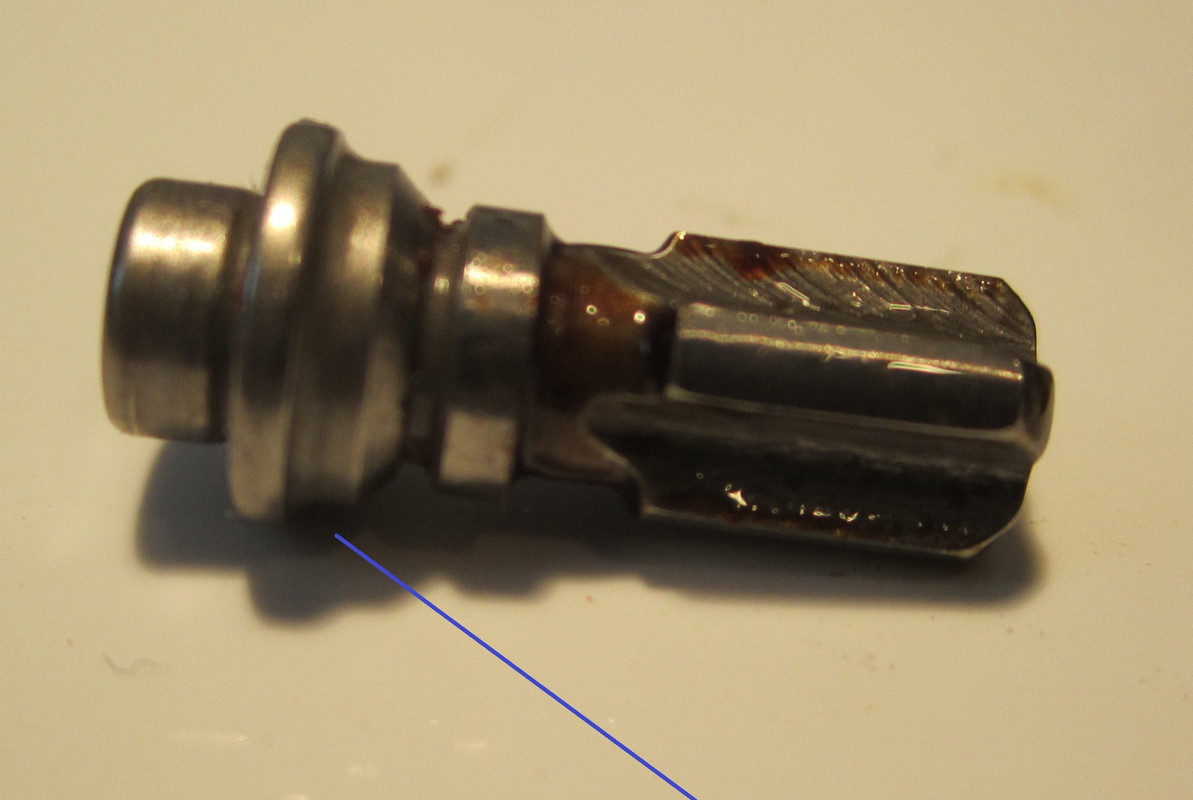 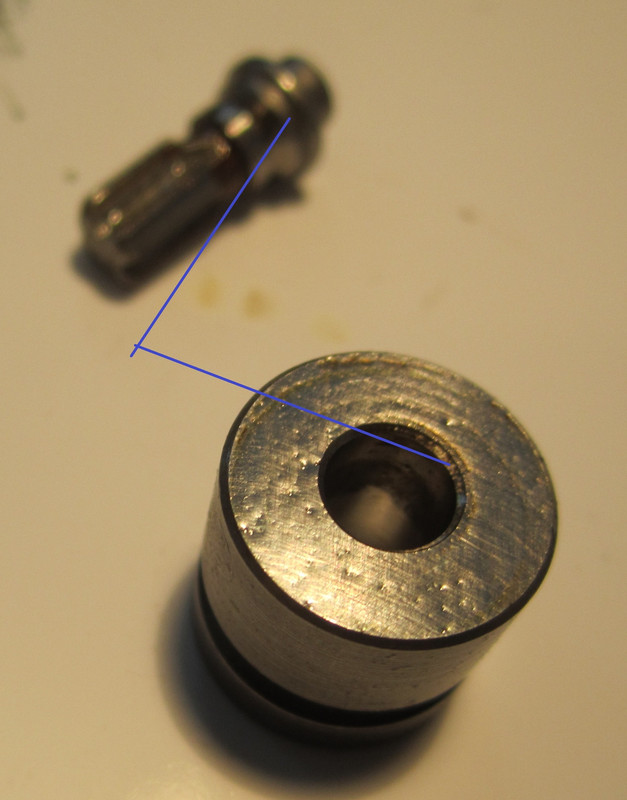 (apologies for blurry photos, took several attempts to get these) First photo shows the valve itself, this sits inside the core leading directly down through to piston top - piston rises with a measure of fuel, pop out this comes opening a volume of fuel to the chamber above activating injector nozzle, return is aided by the spring but also small amount of back flow on injector nozzle closure. The critical part for functioning is the seal shown with two blue lines in second photo, if this is degraded fuel will seep back overnight allowing the fuel to flow back. Something to explore, if pitted it may be possible to hone surfaces as with head valves - not sure - please note, these parts are weighted and matched
__________________
David 1996 Mercedes S124 E300TD - 129k - rolling restoration project - 1998 Mercedes W210 300TD - 118k (assimilated into above vehicle) |
|
#21
|
||||
|
||||
|
Texas, nice one, and yes agree about the spring part, going to order full set from Bosch using pump serial number with kit.
Diagram in your link shows open/close of DV 
__________________
David 1996 Mercedes S124 E300TD - 129k - rolling restoration project - 1998 Mercedes W210 300TD - 118k (assimilated into above vehicle) |
|
#22
|
||||
|
||||
|
Third point of inspection, the sleeve or piston cylinder -
Unfortunately you cannot easily check for tolerance fit with piston itself as this is fixed by other means as yet unexplored, however visual inspection of tube would be possible as below. 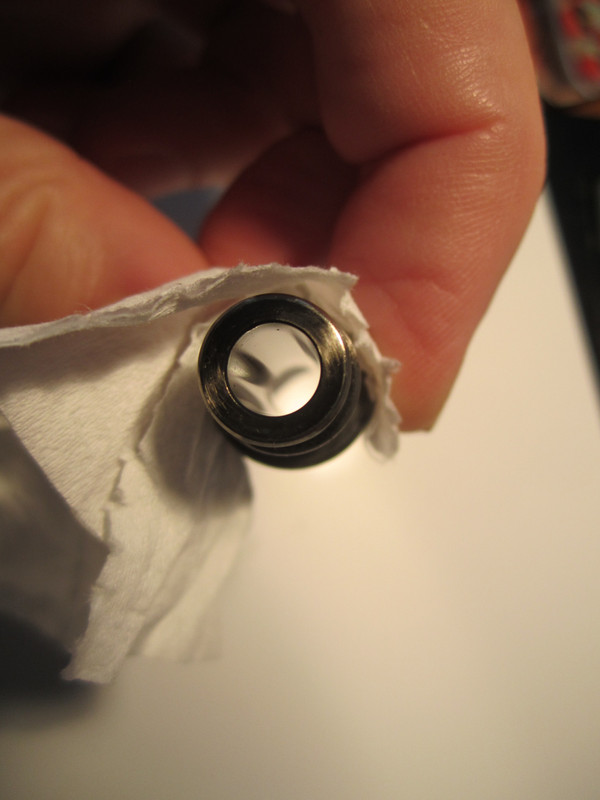 Being immersed in fuel for most of its travel i would hope wear in minimal, that said i might be bit more concerned about low sulfur diesel now, lol Lots of topics and debate about injector nozzle changes/selection, these DV's do same amount of work albeit outside of a hot combustion chamber but worth consideration imo.
__________________
David 1996 Mercedes S124 E300TD - 129k - rolling restoration project - 1998 Mercedes W210 300TD - 118k (assimilated into above vehicle) |
|
#23
|
||||
|
||||
|
Before getting carried away reinventing the wheel with the DV's, read this thread:
Delivery valve internal leak as a cause of nailing? Yes? No? Maybe??? Yes, it's long, but it has a lot of good information. If the DV has an issue, usually it shows up as nailing and can be quite loud. Basically it's a non-return valve. You get positive shutoff or you don't. If you don't, you tend to get nailing due to timing issues that arise from leakdown in the high pressure lines.
__________________
Current stable: 1995 E320 157K (Nancy) 1983 500SL 125K (SLoL) Gone but not forgotten: 1986 300SDL (RIP) 1991 350SD 1991 560SEL 1990 560SEL 1986 500SEL Euro (Rusted to nothing at 47K!) Gone and wanting to forget: 1985 524TD 167K (TotalDumpster™) [Definitely NOT a Benz] |
|
#24
|
|||
|
|||
|
I think you could rig a simple test to check the delivery valve for fit/tightness/seal. Put a vacuum with gauge attached by tube to the bottom of the cylinder, coat the valve with some light weight oil, insert in cylinder, apply vacuum and watch gauge. The one(s) that leaked first/quickest would be the ones most likely to not have a good seal. Probably would want to repeat test to verify the problem one(s).
A better test would be to build a test jig, similar to injector testing, that would allow diesel to be put under pressure to check each delivery valve for leakage past it's seated position. That would be a more reliable test for each delivery valve's components. The photo of the cylinder looks to show some major pitting and wear, what's it history? Last edited by Texasgeezer; 08-26-2018 at 12:03 PM. Reason: added comment about test jig |
|
#25
|
||||
|
||||
|
Diesel, I have never seen this explained on threads before, having read dozens with all sorts of wild stories, some are recent too.
Texas, agreed on test, photo is poor - camera on auto focus bu bore is mirror finish giving that odd hue. Bosch pump kit, parts included in purple (no spring) ebay listing number:172718447948 
__________________
David 1996 Mercedes S124 E300TD - 129k - rolling restoration project - 1998 Mercedes W210 300TD - 118k (assimilated into above vehicle) Last edited by spock505; 08-26-2018 at 11:43 AM. Reason: better formatting |
|
#26
|
||||
|
||||
|
Closer inspection of the DV's from 962 shows how the seating area had been cut, the seat is slightly fatter towards the right of picture.
it may well be possible to hone these seats for better contact 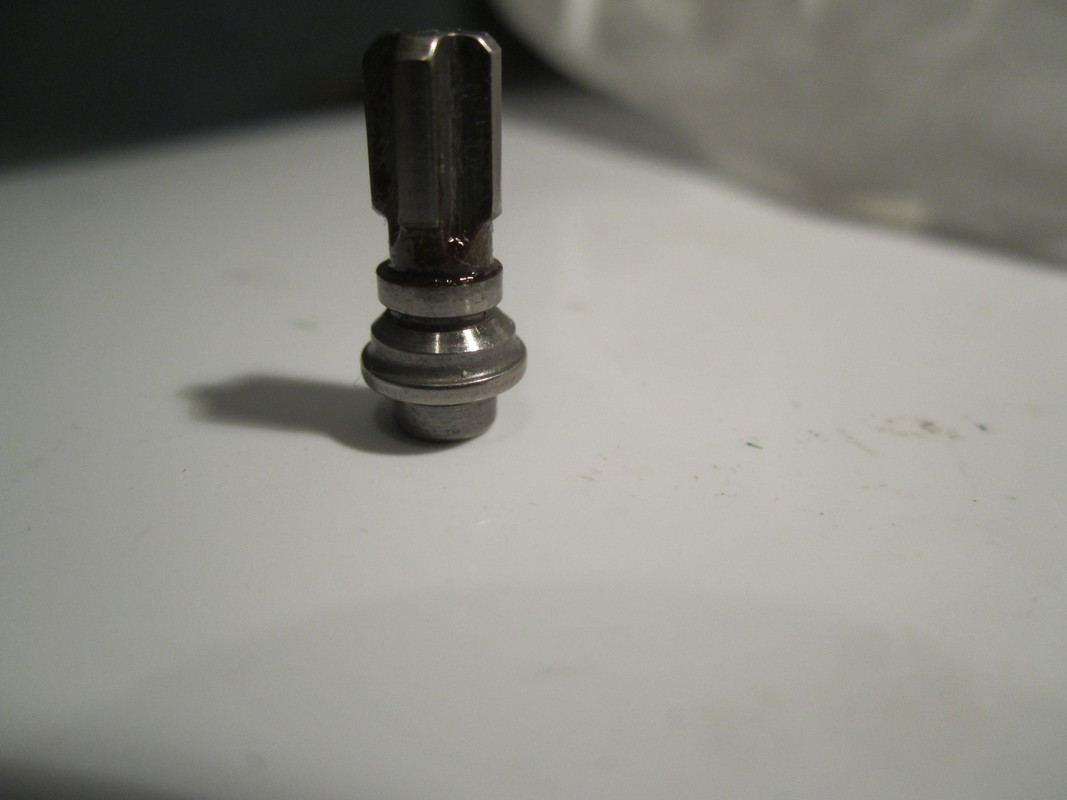 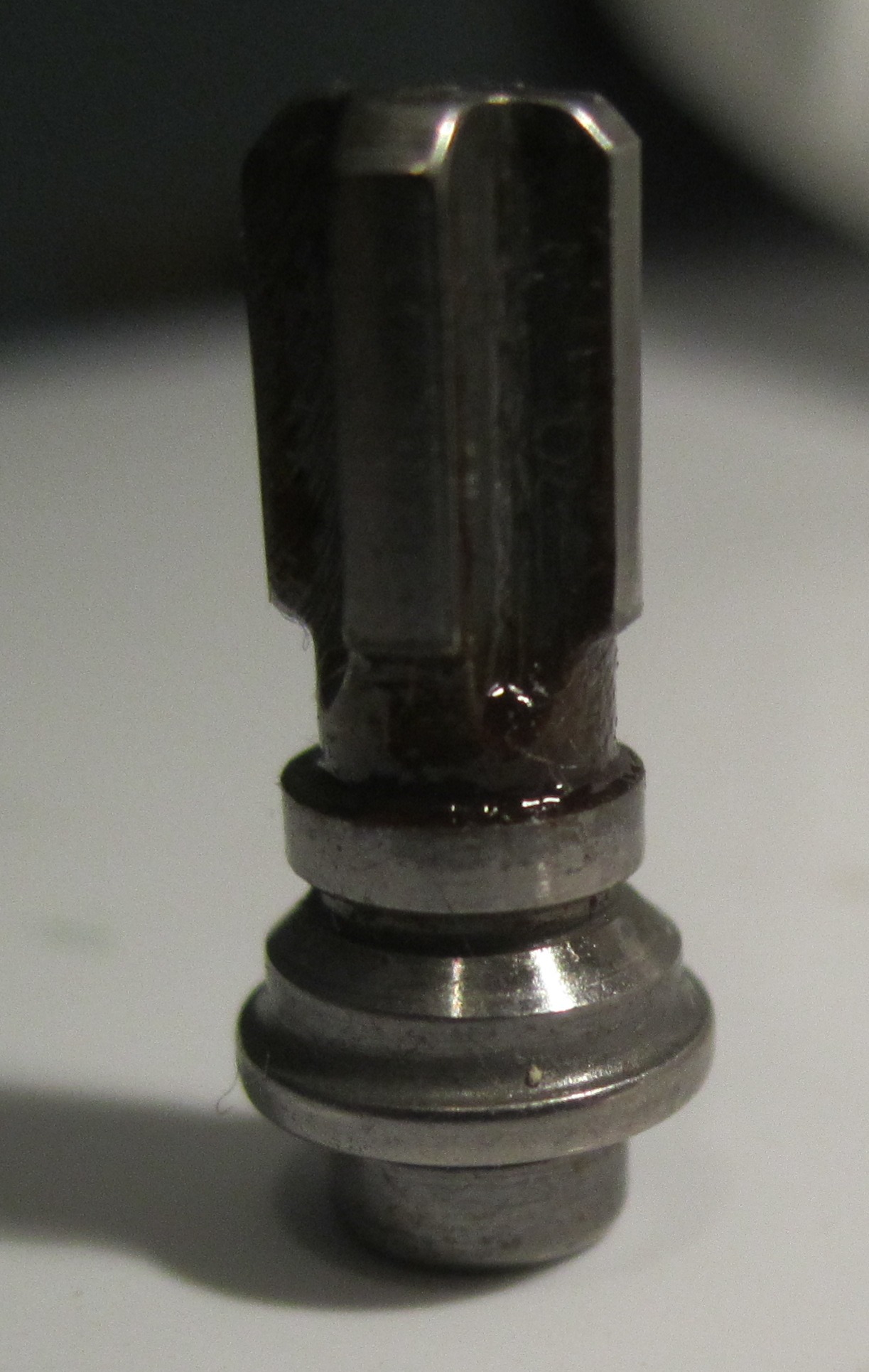
__________________
David 1996 Mercedes S124 E300TD - 129k - rolling restoration project - 1998 Mercedes W210 300TD - 118k (assimilated into above vehicle) |
|
#27
|
|||
|
|||
|
Finally got through most of the thread that "D 300" referenced in post 23. It does make complete sense that careful polishing of the delivery valve & it's seat in the delivery valve holder ( DVH ) would improve engine smoothness if the valve was not sealing tightly. Really glad he tried that and had good results. It's simple, the delivery valve is not doing it's job if the seat is not fuel tight.
Can anyone explain what happens to the fuel if it goes past the copper washer seal area? Supposedly it's been proven that re-doing the copper seal can improve engine smoothness. On the copper washer and the seal it makes, where does the fuel go if it gets past the copper washer due to it not making/having a good tight seal? To me, it either has to (1) go down past the DVH & up the threads past the rubber o-ring or (2) go down past & under the DVH to a lower pressure area. If (1) then it looks like the injection pressure would be enough to blow the o-ring. If (2) it looks like the injection pump plunger would still be putting high pressure fuel at the bottom of the DVH. That plunger doesn't go up into the DVH does it? Also if fuel is flowing under the DVH under high pressure it looks like that high pressure would cause 'cavitation type' wear of the DVH and the seat that the DVH sits on. Sorry I'm dense on this but I haven't been able to find out why the engine would have a rough idle if the copper washer doesn't have a good seal. Where does the bypassing fuel go? Last edited by Texasgeezer; 08-28-2018 at 12:55 PM. Reason: Wording, changed 'cylinder barrel' to 'delivery valve holder' to DVH |
|
#28
|
||||
|
||||
|
The bypassing fuel from the copper washer goes down around the outside of the delivery valve and down into the fuel gallery. The whole "guts" of the injection plunger area is the fuel gallery, so any overflow goes right back down to where it came from. The pressure in that area is only 10-15PSI, so there's no risk of blowing out the O-ring.
An incorrectly seated copper crush washer causes leakdown exactly like a poorly seating delivery valve will. Since the injector line is below pop pressure, it has to pump up again before the injector will pop causing late timing, poor injection quantity, and noise.
__________________
Current stable: 1995 E320 157K (Nancy) 1983 500SL 125K (SLoL) Gone but not forgotten: 1986 300SDL (RIP) 1991 350SD 1991 560SEL 1990 560SEL 1986 500SEL Euro (Rusted to nothing at 47K!) Gone and wanting to forget: 1985 524TD 167K (TotalDumpster™) [Definitely NOT a Benz] |
|
#29
|
||||
|
||||
|
Yup, spot on, it separates the high and low pressure areas of the system, it also keeps the barrel and delivery valve holder under load, failing this fuel would also exit under pressure from mirrored seal between barrel and DV holder.
Incidentally, i found out why those two surfaces have a ground mirrored finish, it's to allow the barrel to rotate increasing fuel flow into the piston area. The piston (or plunger) itself has a helix cut into one side, the barrel fuel inlet (hole marked yellow arrow above) rotates inline exposing the opening for a longer duration, more fuel =
__________________
David 1996 Mercedes S124 E300TD - 129k - rolling restoration project - 1998 Mercedes W210 300TD - 118k (assimilated into above vehicle) |
|
#30
|
|||
|
|||
|
Is the reason for doing three torque cycles when installing the delivery valve assembly simply to improve the smoothness/tightness of the copper washer seal compressed surface area? ( Hopefully to result in a much better seal?)
|
 |
| Bookmarks |
|
|